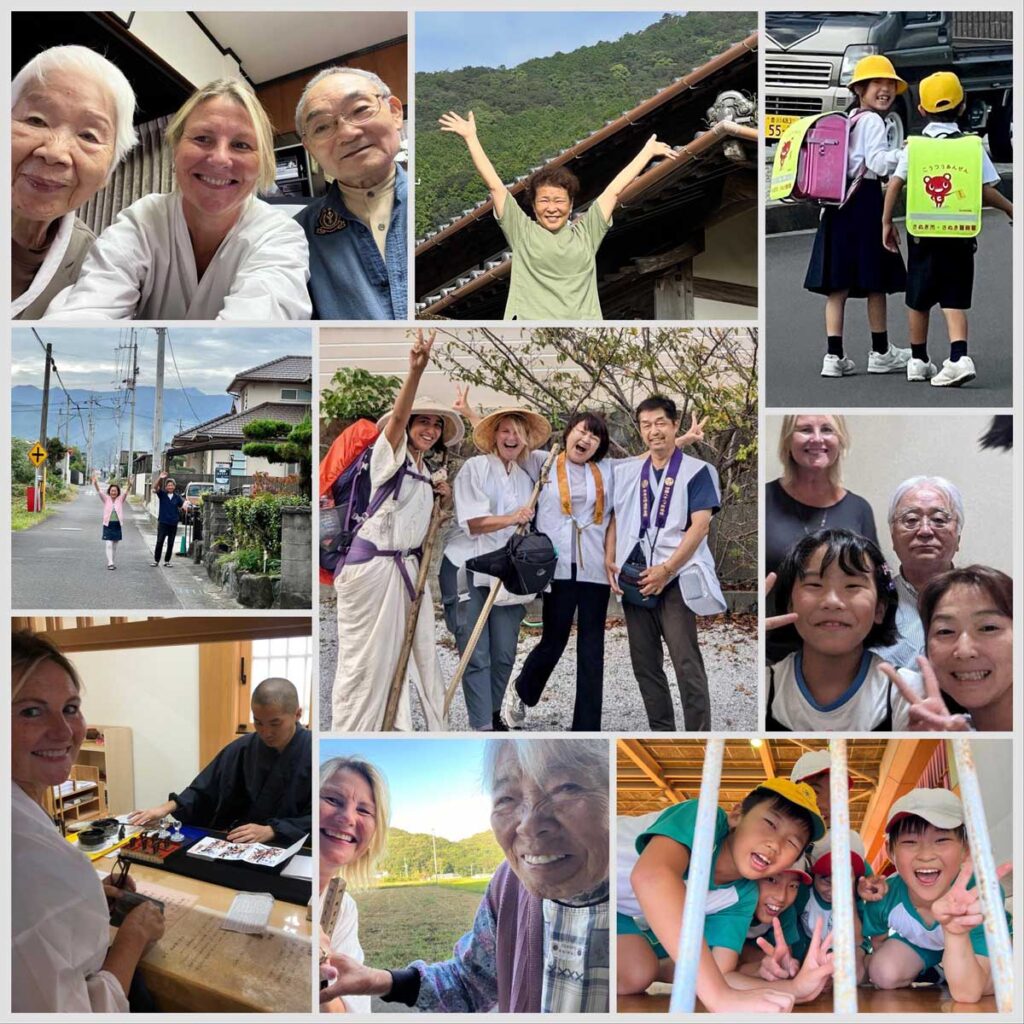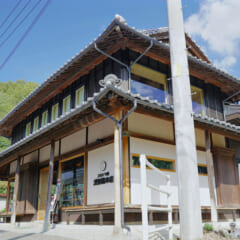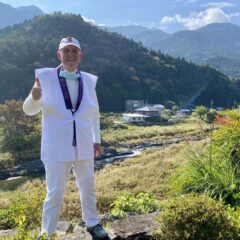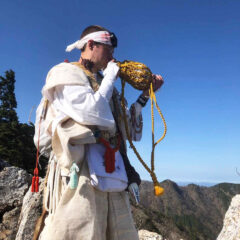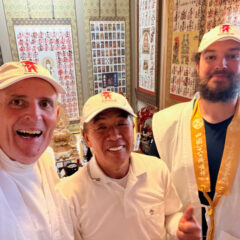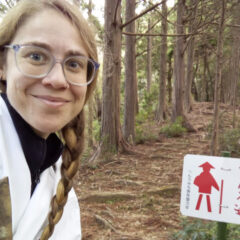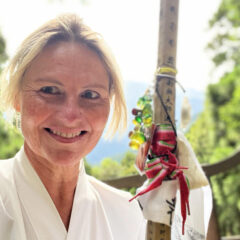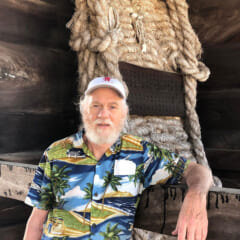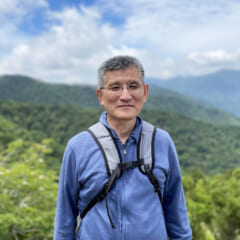My Shikoku Journey (17) by Eleonora, Netherlands
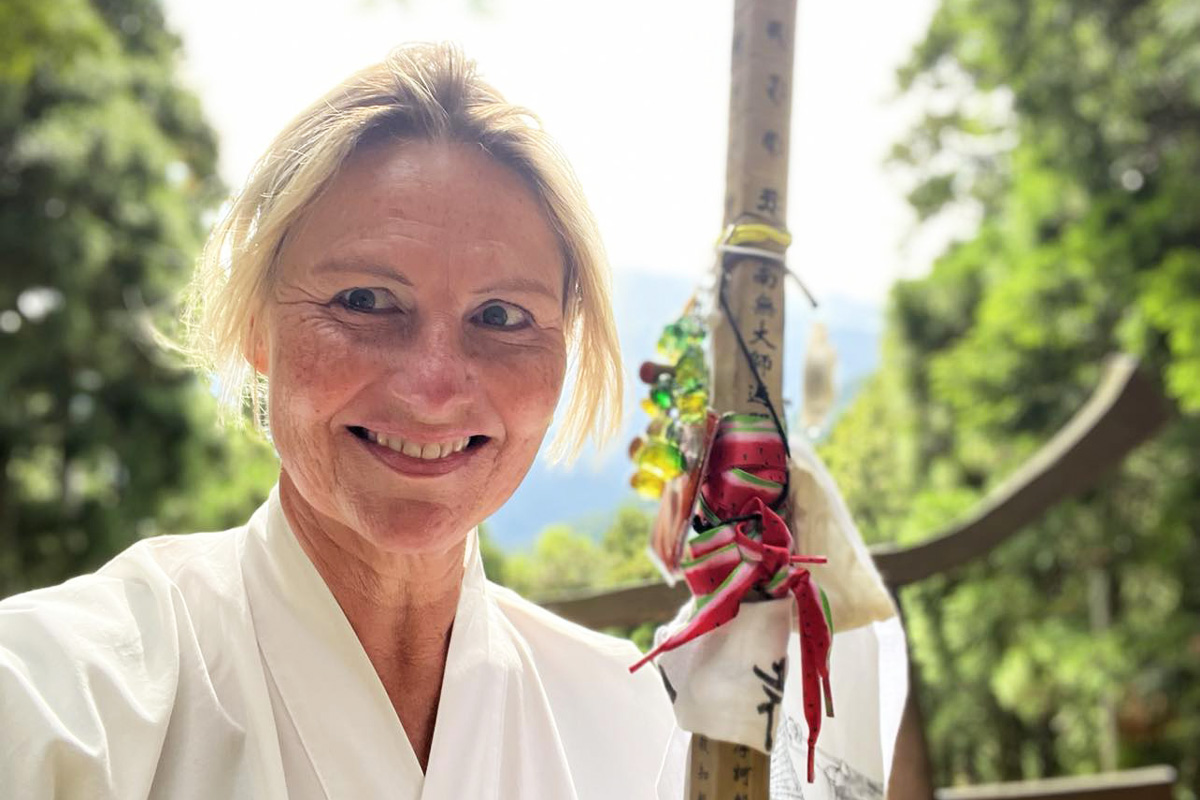
 Eleonora Feije, Netherlands
Eleonora Feije, Netherlands  Complete Shikoku Pilgrimage
Complete Shikoku Pilgrimage
Osettai - the art of giving and receiving.
Eleonora Feije (53), from The Netherlands, did the 88-temple tour on foot, from August 28th to October 21st, 2023.
On my very first night at minshuku Okudaya, after a long and hot day of walking, the monk who drove me to the onsen and the supermarket, said:
” There are two important lessons for your pilgrimage:
1) never use your walking stick on bridges
2) always accept an osettai, a gift to a pilgrim.”
I followed his instructions – only one time did I make the mistake of tapping my kongōzue on a small bridge – and gratefully accepted the osettai during my walk. Especially on moments when I had a hard time, it meant very much to get an encouragement, a genuine smile, a bottle of ice-cold water, a sweet mikan mandarin. When I started my henro at the end of August, it was hot and almost unbearably humid. The climb up to Shōsanji (temple 12) took all my strength and it was a blessing to finally arrive at my accommodation. There was hardship, there was frustration about infinite asphalt roads, endless concrete paths, noisy tunnels. Most of the days I walked completely alone in the woods and the mountains. I met very few women along the road, mainly older Japanese men.
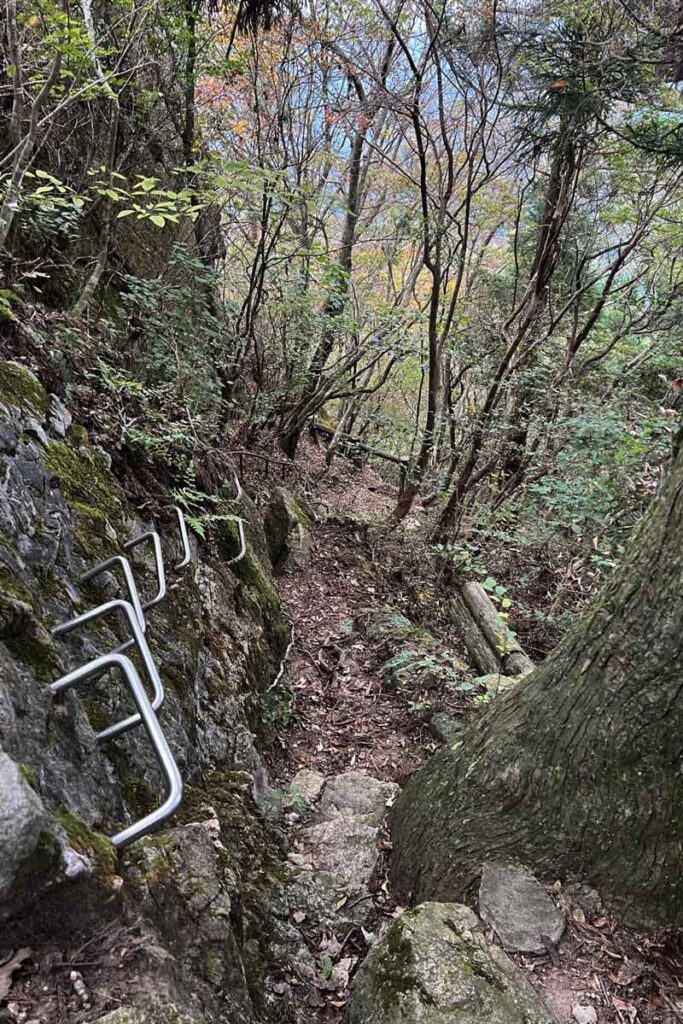
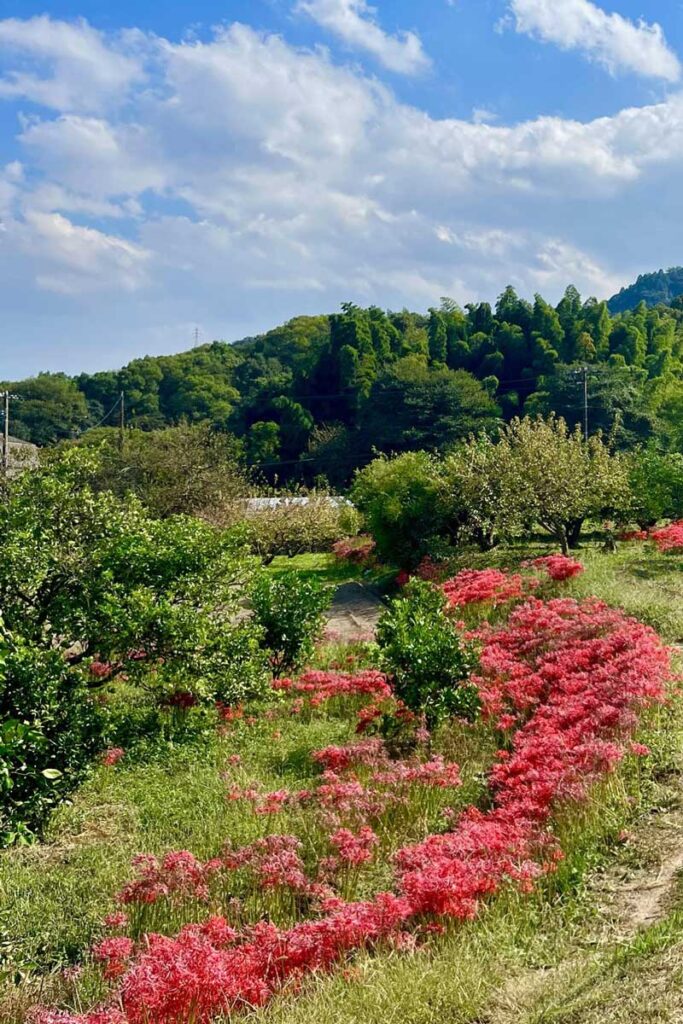
In the beginning I felt insecure at the temples. Not being a Buddhist, I was unfamiliar with the rituals and the sutras, but I was keen on learning. The temples became a place to take a rest and to meet other walking pilgrims. It was always a joy to catch up with ” henro tomodachi ” that I had met before. In the beginning I had more contact with other foreign walkers, but later in my journey it became easier to walk and talk with the Japanese men. They told me that only 30% of the people who start to walk the 88-temple tour will finish. “Now you’ve already come so far as Ehime, you will certainly make it.” I felt more and more accepted and “one of the Japanese boys”.
I owe a lot of thanks to James Devo for making a digital version of the route with all its alternative nature trails, in combination with the app Gaia GPS. Thanks to his work I never lost track. I had all the data on my phone, offline, and it showed me live and in a colored line exactly where I walked. Even in the mountains, where Google maps would not work, or where the signage was sometimes non-existent.
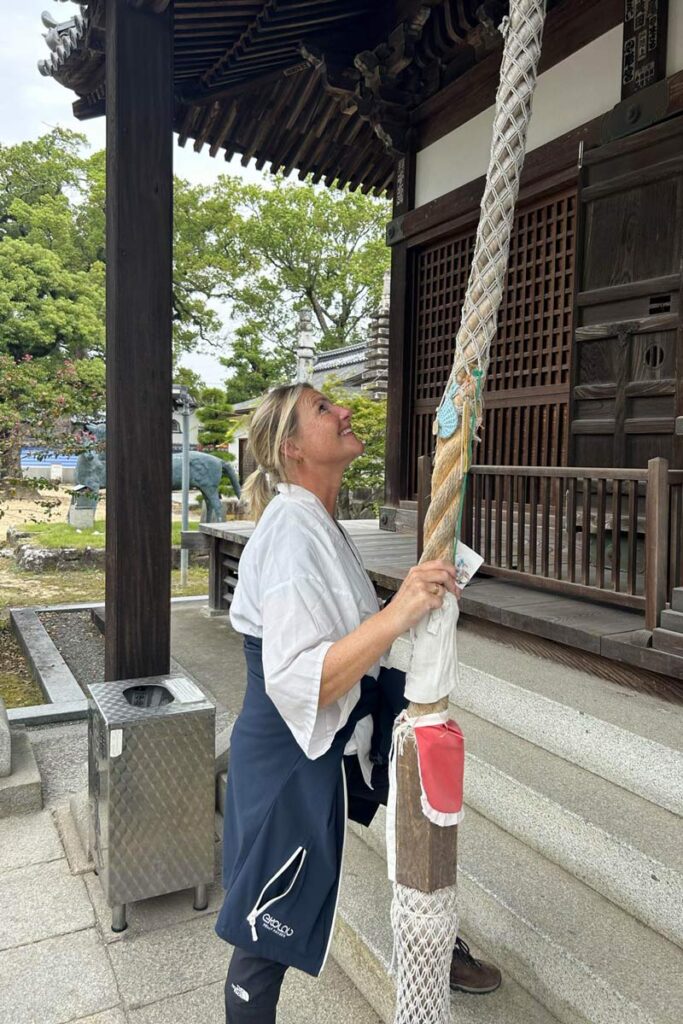
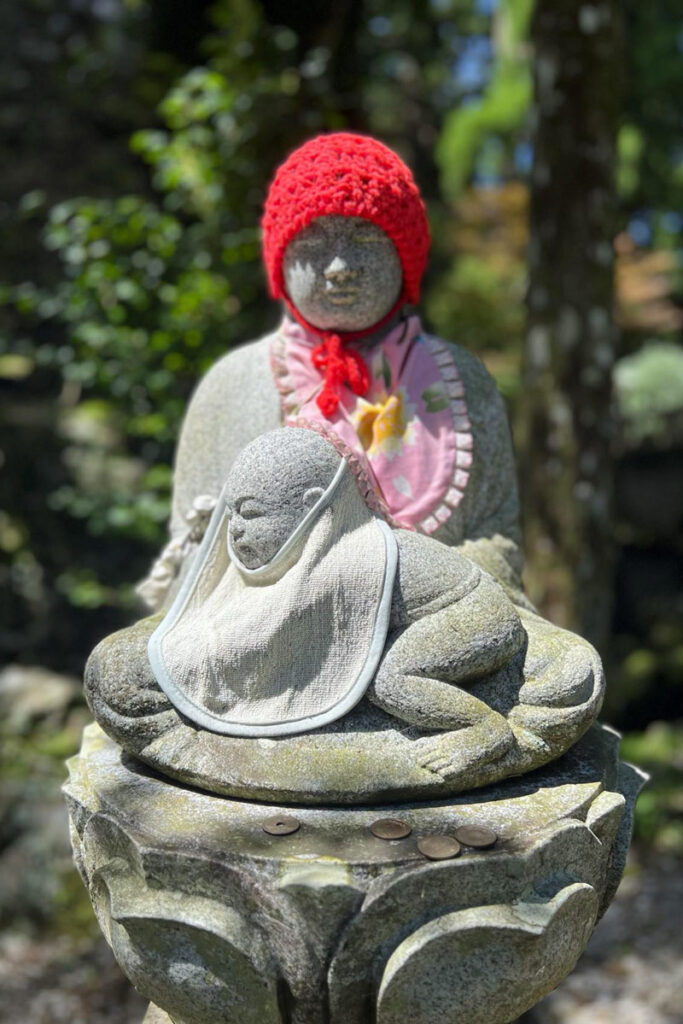
During my entire pilgrimage, 54 days in total, I felt totally safe in Japan. Even though I was out there all alone in the woods, or alone in an overnight rest hut, I never had any bad experiences. In what other country can you leave your bag unattended or are bikes and houses unlocked?
The temple visits were valuable, the stamp book will make a wonderful memory, and the walks in nature lifted my soul. But what impressed me most during all these weeks, were the people of Shikoku. The art of giving and receiving osettai, is truly a precious aspect. A small gesture can leave a lifetime impression on someone. Pilgrims are easy to recognize by their sedge hat, white hakui and kongōzue; it is obvious they can use a little encouragement. In today’s world, where people are constantly on their devices and real one-to-one contact gets scarcer, it is of vital importance to continue to reach out to each other. To look at the other and give him a smile or a compliment. So many people are having a hard time or are suffering. If only they could wear something as recognizable as a pilgrim suit, maybe we could see their need better. A word of affirmation, a bit of mental or emotional support, can mean the world if you’ve lost trust in society or yourself. After all, wherever we live on this planet, we all can use a little help sometimes. Being helpful to others works both ways, it also lifts your own spirit.
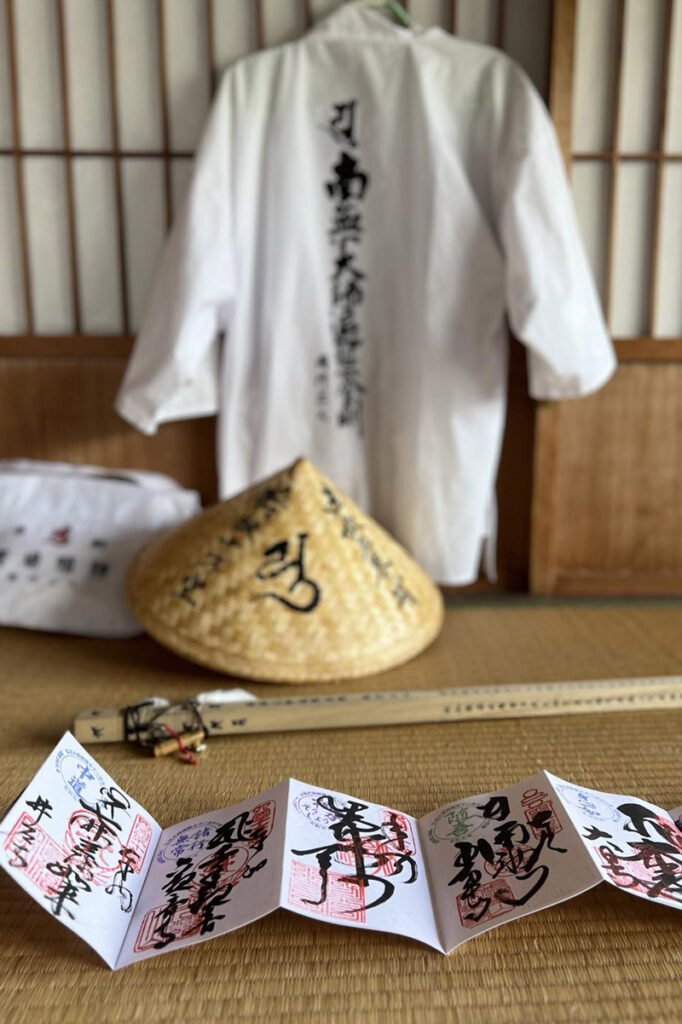
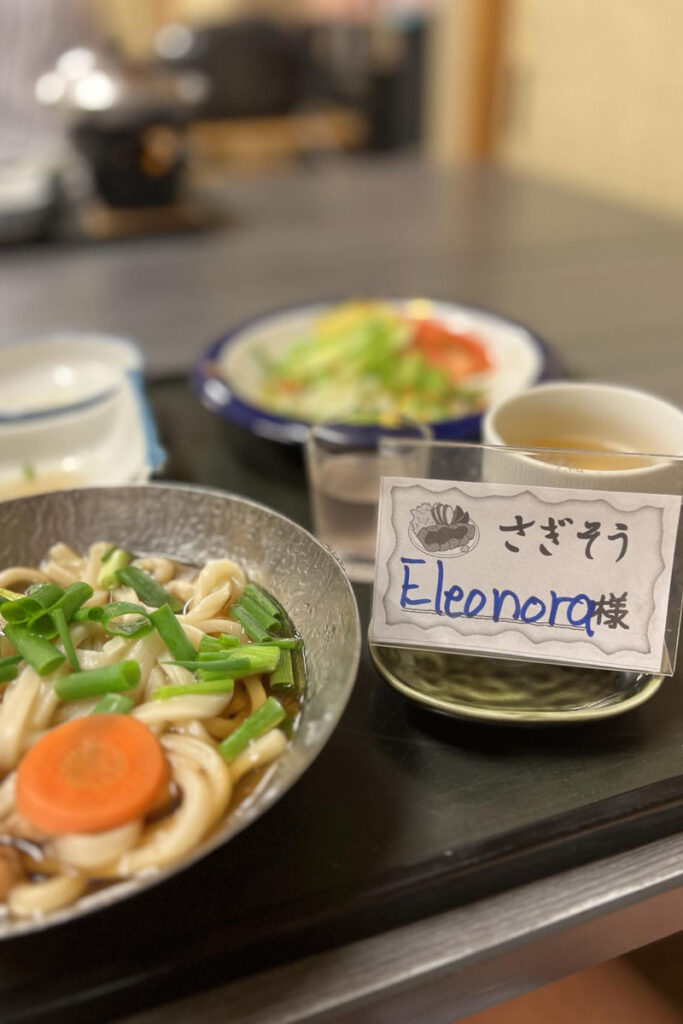
I think I was the woman with the smallest backpack ever, a hip belt of only 3.5 kilograms was all I had for those two months. But as little luggage as I had, part of that was a batch of key rings in the shape of Dutch wooden clogs. Whenever I received an osettai, or whenever I was thankful for a nice service (not difficult in Japan, as the willingness to help is incredible), I would write an osamefuda [name slip] with a personal message and give the small clogs. I was happy to surprise other people and to see how much they appreciated it.
- Offer your hearts to each other.
- Look upon and speak to others with kindness.
- Smile to others when you meet.
This is written on the back side of the “Shikoku Japan88 Route Guide”, as some of the “Muzai no Shichise” [gifts that need no wealth].
It also reminds me of the expression Ichigo, ichie, that I heard along the road: one time, one encounter. We must cherish this moment, this encounter, since it will never be repeated with this same people, under the same circumstances. This time is always the best time. The small candles we lit at the temples quickly burn with the fluttering wind. As short is our own life. It is easy to procrastinate, to think ‘once I am retired, I’ll have the time to do a long-distance walk’. But this time is the right time. Our candle is burning right now, we must live now. Tomorrow the world can be totally different.
After walking 1200 kilometers and visiting all 88 temples, after swimming numerous times in the Pacific and the Seto inland sea, after going through awakening, asceticism, and enlightenment, I feel extremely thankful for all these special encounters and for all the people who contributed to my unforgettable journey.
